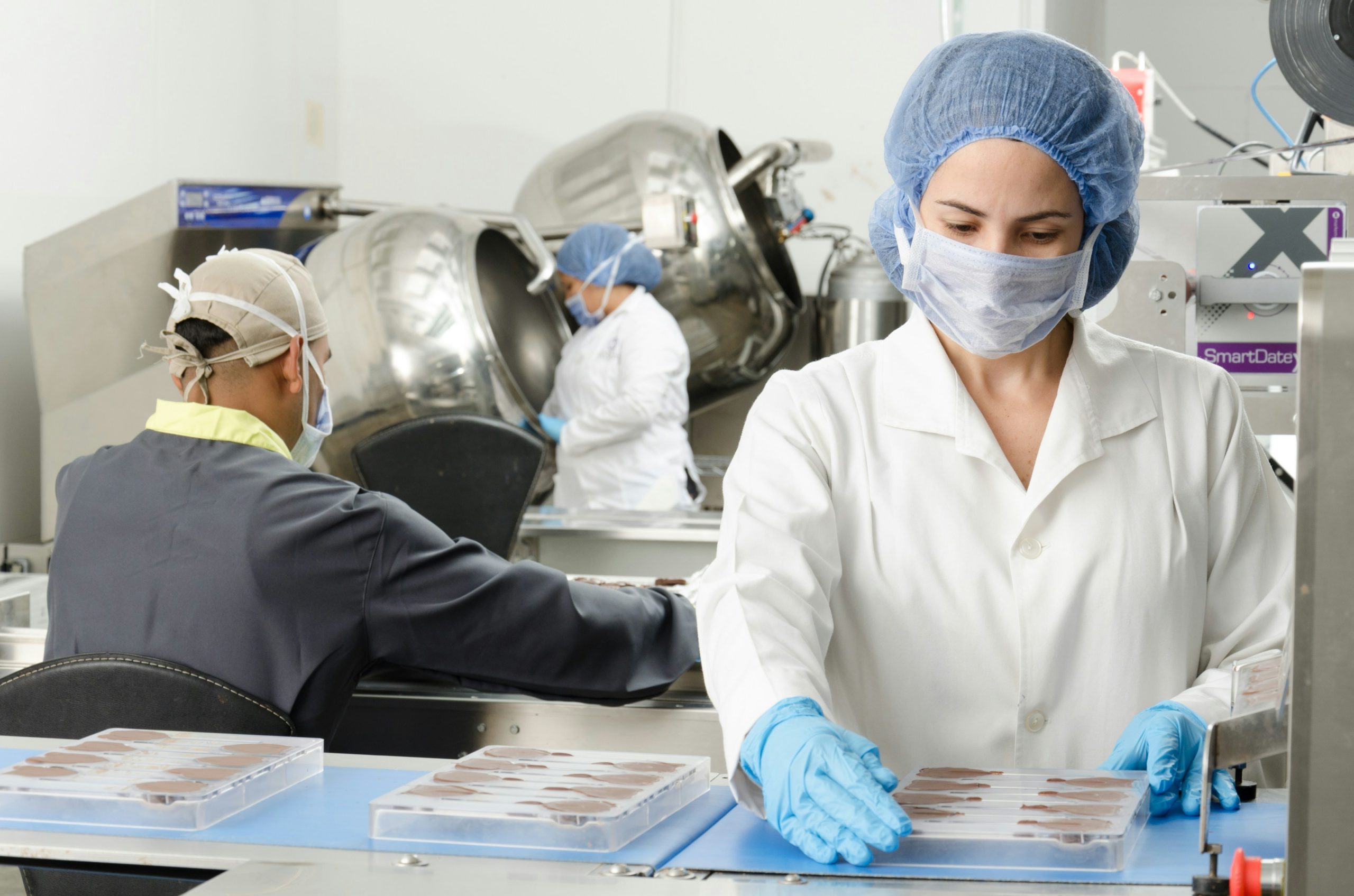Approximately 48 million Americans fall ill with foodborne illnesses each year, with roughly 3,000 cases resulting in death, according to the CDC. Foodborne illnesses occur, of course, through the consumption of food that has been contaminated with pathogens like Salmonella.
Those disease-causing pathogens are spread through unhygienic food handling processes.
Controlling Microbial Growth with Polymeric Antimicrobial Food Packaging
Polymeric food packaging is highly effective at controlling microbial activity, making it a commonly used form of packaging. Bacteria require moisture to thrive and, to combat bacterial spread, polymeric food packaging forms a barrier between food and the outside environment so that moisture doesn’t accumulate within the package.
Both natural and synthetic antimicrobial agents can be used to give packaging its antimicrobial characteristics. Natural agents can include organic acids, bacteriocins, and metals such as zinc oxide. Synthetic agents are often fungicides and EDTA. Each one’s activities target a different subset of microorganisms, but they can be paired to broaden the range of microbial targets.
Utilizing these agents allows manufacturers to ensure that the products delivered to stores and consumers are fresh and free of contaminants.
Natural Antimicrobial Agents
Zinc Oxide: Zinc Oxide is an inorganic compound with numerous applications, such as food and pharmaceuticals. Zinc Oxide is a trace element, meaning that it is present in trace amounts in human tissues, and so the FDA has declared it generally safe to use. Due to its antimicrobial properties, microparticles of zinc oxide are integrated into polymeric packaging to aid in food preservation.
Bacteriocins: Bacteriocins are antimicrobial toxic peptides produced by bacteria that inhibit the growth of closely related bacterial strains. The two most commonly used bacteriocins are nisin and pediocin. In recent decades, bacteriocins have been refined and accepted as safe for food packaging.
Organic Acids: Organic acids are widely used antimicrobial agents known for their efficacy. Some examples of organic acids include lactic acids, tartaric acids, malic acids, and sorbic acids. Like Zinc Oxide, organic acids can be found in numerous products, like cosmetics and skincare. Infusing antimicrobial films with starch-based acids like potassium sorbate is a commonly used, cost-effective antimicrobial packaging solution.
Synthetic Antimicrobial Agents
Fungicides: Fungicides are sometimes used in packaging. They’re chemical compounds that are able to kill or inhibit the growth of fungi. Imazalil is a fungicide that works against a wide range of fungi. It’s often used to prevent the decay of citrus fruits post-harvest and has also been found to be effective at inhibiting the growth of mold when integrated into food packaging. However, similar to bacteria, overuse of fungicides can lead to the evolution of highly resistant fungi strains. Thus, this type of antimicrobial agent is not favored over other natural agents.
EDTA: EDTA (ethylenediaminetetra-acetic acid) is a chelator that gets its antimicrobial properties from its ability to weaken bacterial cell membranes. It works best by enhancing the effects of other antimicrobial agents, such as weak acids. It can also boost the effectiveness of bacteriocins like nisin and enzymes like lysozyme.
Polymeric Antimicrobial Food Packaging Applications
Polymeric antimicrobial packaging is used to prevent the spoilage of meat, poultry, seafood, produce, and even beverages. When it comes to foodborne illnesses, raw meat and poultry are the most likely to be contaminated and have been associated with numerous outbreaks over the years. Therefore, they have been the most challenging to achieve and maintain microbiological safety when transporting to consumers.
Increased use of polymeric antimicrobial packaging is one way that manufacturers can reduce the spread of foodborne pathogens.
Unlike animal products, produce isn’t always cooked to pathogen-killing temperatures. Properly washing produce before consumption is advised to remove most microorganisms, but it won’t always remove all of them. Pathogen-fighting packaging efforts for produce include using antimicrobial sachets and edible coatings to prevent pathogens and microorganisms from reaching the consumer in the first place.
Meanwhile, packaging for beverages provides more than just protection against leakage.
Antimicrobial food packaging for beverages also helps to prevent their nutritional value and composition from becoming compromised from exposure to external elements, like oxygen or pathogens, while sitting on store shelves.
Ultimately, polymeric antimicrobial food packaging is an innovative and powerful advancement in foodborne illness prevention, some experts say. Though it is widely used in food packaging today, researchers and scientists are still working to expand its effectiveness.
As innovations continue to be made, polymeric antimicrobial packaging has strong potential to become the world’s first choice for food packaging.
Jordan McDowell is a writer and content strategist. He specializes in technically-oriented B2B and B2C content for a number of digital companies.












